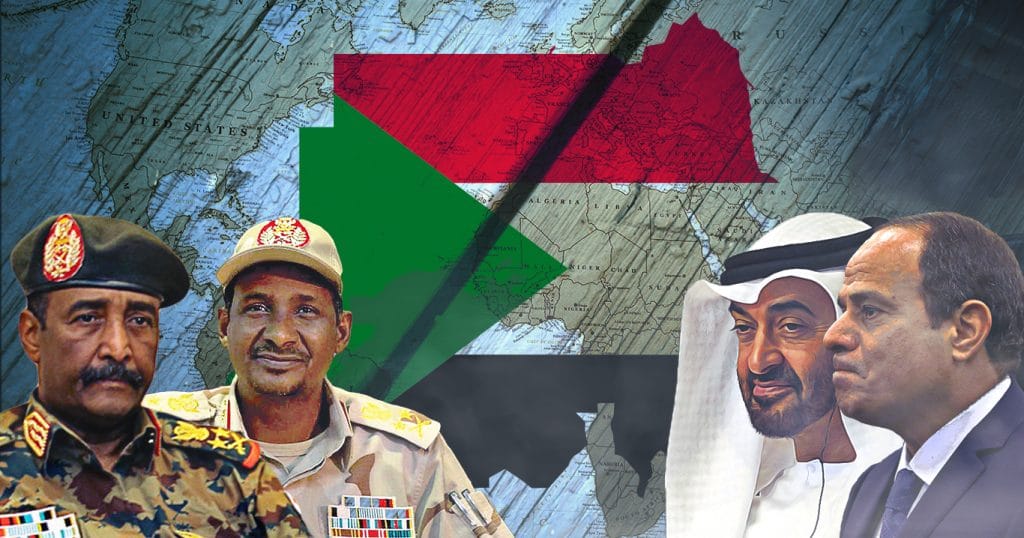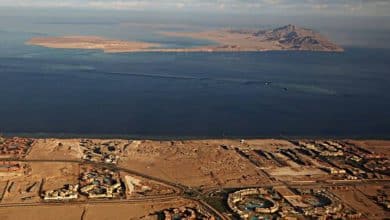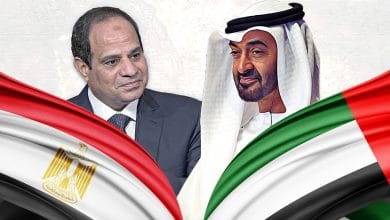
Yemen: Saudi Arabia and UAE, Unknown Fate and Likely Collapse
In March 2015, Saudi Arabia and the UAE led an Arab and Islamic coalition that was supported by many Arab and Islamic countries with the aim of facing the Iranian tide in Yemen, restoring constitutional legitimacy, and overthrowing the Houthi coup d’etat; but the coalition soon tore apart starting from neighboring countries and members of the Gulf Cooperation Council (GCC), where Qatar pulled out of the coalition in 2017, and Kuwait left it as well, while Oman had not participated from the beginning. Then, many Arab countries took the same step, such as the Arab Maghreb countries (Tunisia, Algeria and Morocco), Jordan, and Egypt. Meanwhile, Pakistan and Turkey have also lifted the lid off the coalition.
There is virtually nothing left of this coalition, except for Saudi Arabia and the United Arab Emirates that face an unknown fate and an inevitable end after the catastrophic political failure that has befallen them under the world’s eyes, especially their involvement in the scheme of dividing the Yemeni land, amid killings and assassinations, due to entering into a costly war with unknown consequences, badly affecting their economy.
Shredding the internal front of the Saudi-Emirati coalition
The war in Yemen has made many Saudis and Emiratis lose trust in their rulers; and the events in Yemen have revealed the hidden face of the Saudi and Emirati regimes. The Saudi regime used to practice assassinations against its opponents both at home and abroad, as happened with the Saudi journalist Jamal Khashoggi who was murdered atrociously in his country’s consulate in Istanbul, Turkey after he had criticized the Kingdom’s policy. However, the Saudi government’s initial denial and later admission drove the Saudi people to review similar previous files of assassinations committed at home and abroad, and have become assured that the Saudi royal family has been involved in all of them. Another example of these crimes is the recent assassination of King Salman’s personal guard, as an integral part of the Saudi crown prince and his followers’ method to impose hegemony on everything in Saudi Arabia, including Saudi people. Crown Prince Mohammed bin Salman has closed many charitable and humanitarian institutions, confiscated their money and property, and arrested scholars and preachers, even those who had supported the Saudi government in its war on Yemen and its position in Syria.
The Saudi crown prince has also arrested a group of Saudi businessmen at home under flawed justifications. He also raised the prices of oil derivatives under the pretext of austerity measures related to his Vision 2030, reduced salaries and wages in the name of the war in Yemen, pursued capitals in the Kingdom, and targeted foreign expatriates, which prompted many Saudis and residents to search for other alternatives for residence and investment. In addition, there is a state of recession in many major companies in Saudi Arabia and the UAE, which is a dangerous indicator for the beginning of their collapse and fall.
Repeated attacks
Saudi Arabia was never exposed to such political and military scandals it is currently experiencing, including targeting its ships, airports and oil fields during the reign of King Salman bin Abdul Aziz and his son, Crown Prince Mohamed bin Salman, where the kingdom seems unable to defend itself amid lack of sufficient support from its allies, which indicates an imminent colossal collapse of Saudi Arabia.
The Saudi people’s indignation towards Saudi government has become apparent, where some Saudis cooperate with Iran and the Houthis, according to the military spokesman for the Houthis who claimed that they had obtained information from inside Saudi Arabia that enabled them to strike Aramco with high accuracy.
The Saudi-Emirati coalition is a losing bet
By reviewing the Yemeni-Saudi history and the interventions that Saudi Arabia has undertaken, whether individually or with its Emirati ally, to support any Yemeni party, the fate of Saudi-Emirati coalition will be complete failure, a conviction that has become clear to the Yemeni people.
Saudi Arabia was against President Ibrahim Al-Hamdi in the seventies (1974-1977) and supported some sheikhs and leaders with the aim of toppling the president and empowering its loyalists. Although they were able to do so for a limited period of time, but they were later overthrown and defeated. In the 1980s, Saudi Arabia supported some saboteurs as well as the communist government in the south, but all their plans were also doomed to failure, as in the early nineties the two parts of Yemen were unified, and the Yemeni people triumphed, preserved their unity, and defeated Saudi Arabia and its allies.
When Saudi Arabia and the UAE supported President Ali Abdullah Saleh during the 2011 revolution, the result was the downfall of Saleh. When they supported the separatist project represented in the Transitional Council in southern Yemen from 2015 to 2019, fighters from all sides cooperated, recovered Shabwa and Abyan, and were on the verge of entering Aden, exposing the betrayal of the Saudi-UAE coalition that had entered Yemen under the pretext of restoring legitimacy.
Many observers even expect the defeat of the legitimate government at the hands of this losing bet, Saudi Arabia and UAE, unless it quickly review its position and look for another ally or abandon dependency on Saudi Arabia and the United Arab Emirates in its decision-making process.
Legitimate gov. strengths
1- International recognition
2- Possession of the state’s resources of (electric, gas, oil)
3- Having land, sea and air outlets
4- Balanced army and security forces
5- Customs taxes
6- Salaries and wages
7- Media machine
8- Strong fighters
9- Combat doctrine
10- A strong popular incubator in all Yemeni governorates
Legitimate gov. weaknesses
1- Leadership’s administrative weakness
2- Leadership’s weakness of will
3- The coalition’s failure to search for alternative options.
4- Financial and administrative corruption at all levels
5- Its presence outside the country (in exile)
6- Staying at the mercy of Saudi Arabia
7- Dependency in decision-making
Houthis’ strengths
1- Young leaders that managed the crisis successfully
2- A powerful military arsenal
3- The ability to mobilize
4- Highlighting injustice and raising awareness about it
5- Convincing the inside and outside that the Saudi coalition is occupation
6- Forces have a fighting doctrine
7- Control of highly-populated governorates, including the capital and all government institutions
8- One decision-making authority
9- A united front
10- A strong alliance possessing will and management.
11- A unified media kitchen internally and externally.
12- One of the strengths of the Houthis is controlling the port of Hodeidah and controlling the mountain chain that threatens the Red Sea.
13- Lack of a strong public incubator in most Yemeni governorates.
14- Control of important mountain chains.
Houthis’ weaknesses
1- They are no recognized internationally.
2- Imposition of domination by force
3- Financial and administrative corruption at all levels
4- Loyalty to Iran and Hezbollah
5- Autocratic rule
Before the fall of the separatist project
Saudi Arabia and the UAE trained a group of mercenaries, whether intentionally or unintentionally to implement its criminal scheme in Yemen under the name of security belts starting from Socotra through Hadramout, Shabwa, Abyan, Aden and Lahj, up to in the western coast, in addition to some militias in Taiz and Saada. Saudi Arabia and the UAE spent billions of dollars on these mercenaries, providing them with all military and logistical support they need, with the aim of tightening control of most parts of Yemen.
However, after the passage of years of training and qualification and spending billions of Saudi riyals and Emirati dirhams to establish armed gangs and hired militias to implement the separation scheme in Yemen with the aim of controlling the port of Aden and Hadhramaut ports in addition to seizing oil in Shabwa and Hadramaut. However, after a 5-day confrontation, the Saudi and Emirati militias fell in Shabwa and Abyan at the hands of the national army and popular crowds which are about to restore Aden.
Scenarios and Potentials
1- Dividing Yemen into three regions and may be more: This is what the occupation states are working on, on the ground, but most indicators confirm its failure and that it has become difficult to achieve this on the ground, but this scenario remains an issue that can be overcome.
2- Opening a new front in Al-Mahrah, Hadramawt and other cities against Saudi Arabia and the UAE led by the Southern Yemeni Salvation Council: Perhaps this will be the strongest scenario at this stage to confront the occupation countries due to the absence of any justification for the Saudi-Emirati presence and given the fact that its leadership enjoys popular presence, fighting ability and other tribal factors, as well as regional support and proximity to the border with the Sultanate of Oman, which rejects any Saudi or Emirati presence at its border with Yemen.
3- Opening a new strong independent front in Taiz and the central regions to be a prelude to be joined by the rest of the military units to confront the occupation powers and tools in the West Coast, Aden and Lahj ….
4- Increasing the frequency of assassinations of prominent figures in the army and security forces.
5- Besieging Marib and Al-Jawf from all directions and activating the role of the pro-coalition security apparatus by assassinating prominent figures.
6- Concluding reconciliation agreements with the Houthis under Omani-Iranian sponsorship.
7- Major changes affecting the vice president and beyond.
8- Control of the coastal front of some areas close to it and separating it within one region to secure the territorial waters of the aggression countries in particular.
9 – Houthis may target sensitive and vital places such as oil wells, airports and towers in Saudi Arabia and the UAE, forcing them to stop the war and calling for an urgent reconciliation between the Yemeni parties.
Ideas and Proposals
1- Urgent call to stop Saudi-Emirati aggression.
2- Establishing a new independent national entity that rejects dependency on Saudi Arabia or the UAE to be a substitute for legitimacy, as it has become deprived of the will and ability to manage its affairs or make required decisions for guiding and supporting resistance or openly tell the people they are powerless.
3- A national reconciliation between the Houthis and Al-Islah party in particular and the rest of the national components in general, and seeking to boost Yemeni unity by forming a government of accord, canceling all documents and agreements after 2011, activating the work of the current constitution, activating the activity of legislative institutions, and forming a presidential council.
4- Setting a time plan to integrate the army and security forces.
5- Presenting clear plans for the reconstruction of Yemen, whose cost will be borne by the Saudi-Emirati coalition and all international and regional powers, as well as internal parties that have been partners in causing and managing the crisis over the past years from 2011 until today.

Read also: Sudan Features of Post-Bashir Foreign Policy




